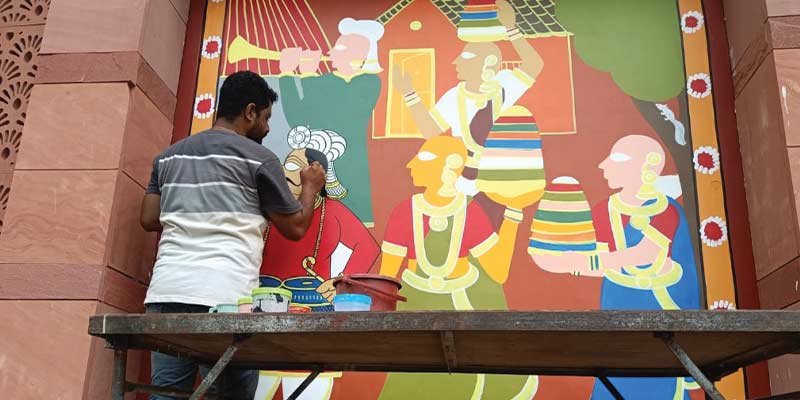- India
- Jul 06
- Kevin Savio Antony
Culture ministry initiates Project PARI
• Ahead of the 46th session of the World Heritage Committee in New Delhi, the government has drawn up a public art project named PARI on India’s cultural legacy and the country's UNESCO heritage sites, among others.
• The 46th session of the World Heritage Committee (WHC) is scheduled to be held in New Delhi between July 21-31 July.
• The WHC decides on inscription of new sites into the UNESCO World Heritage List. India will be hosting the meeting for the first time.
Project PARI
• Art is a vital medium to propagate and spread messages through creativity, hence the outreach of public art is immense and thought-provoking. It acts as a significant factor in giving visual recognition to a specific place. The public art augments and induces meaning to a public space making it an integral part of the culture and society.
• Project PARI (Public Art of India), an initiative of the Union Ministry of Culture being executed by the Lalit Kala Akademi and the National Gallery of Modern Art, seeks to bring forth public art that draws inspiration from millennia of artistic heritage (lok kala/lok sanskriti) while incorporating modern themes and techniques.
• These expressions underscore the intrinsic value that art holds in Indian society, serving as a testament to the nation’s enduring commitment to creativity and artistic expression.
• Under it, Lalit Kala Akademi, an autonomous institution under the Ministry of Culture, has invited more than 150 visual artists from all over the country. These artists are working on various sites in the national capital for the beautification of the public spaces for the upcoming event.
• Traditional art forms as well as sculptures, murals, and installations have been created under this beautification project.
• The aim of the PARI project is to provide a platform to uplift the aesthetic and cultural outlook of Delhi while adding grandeur to the rich historical legacy of the national capital.
• These will include Phad paintings (Rajasthan), Thangka painting (Sikkim/Ladakh), miniature painting (Himachal Pradesh), Gond art (Madhya Pradesh), Tanjore paintings (Tamil Nadu), Kalamkari (Andhra Pradesh), Alpona art (West Bengal) and Cheriyal painting (Telangana).
• Other art forms will include Pichhwai Painting (Rajasthan), Lanjia Saura (Odisha), Pattachitra (West Bengal), Bani Thani Painting (Rajasthan), Warli (Maharashtra), Pithora Art (Gujarat), Aipan (Uttarakhand), Kerala Murals (Kerala), Alpana art (Tripura) and more.
• The themes for proposed sculptures to be created under Project PARI include wide ranging ideas such as paying tribute to nature, ideas inspired by the Natyashastra, Mahatma Gandhi, toys of India, hospitality, ancient knowledge, Naad or primeval sound, harmony of life, Kalpataru the divine tree, etc.
(The author is a trainer for Civil Services aspirants.)

